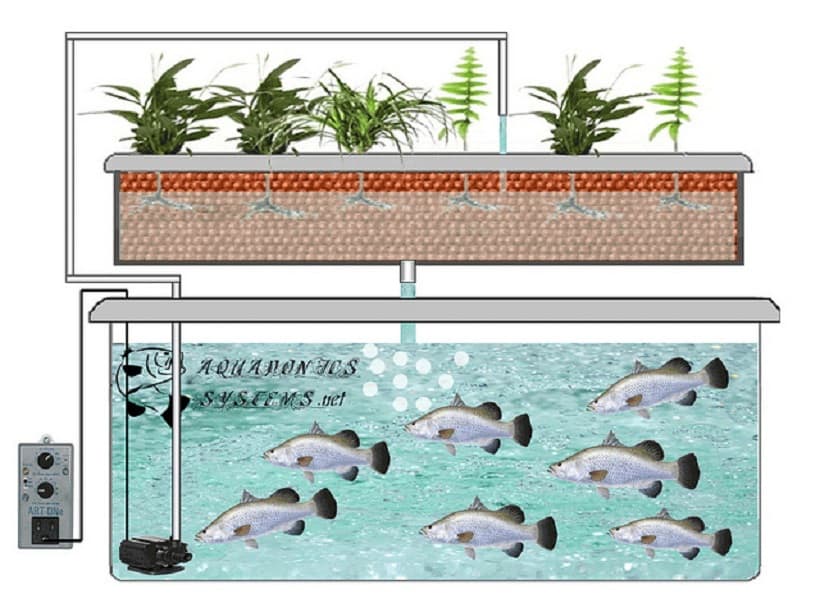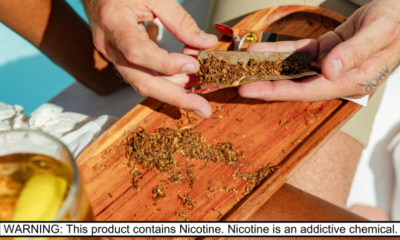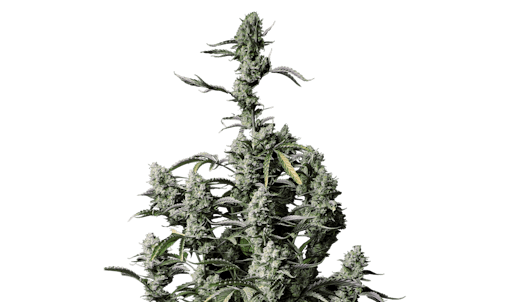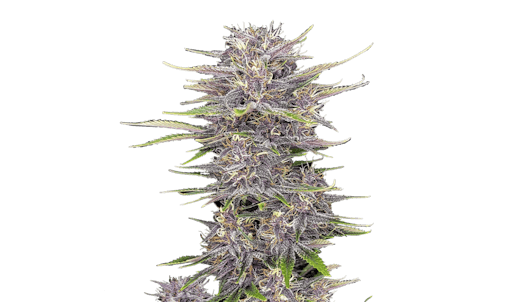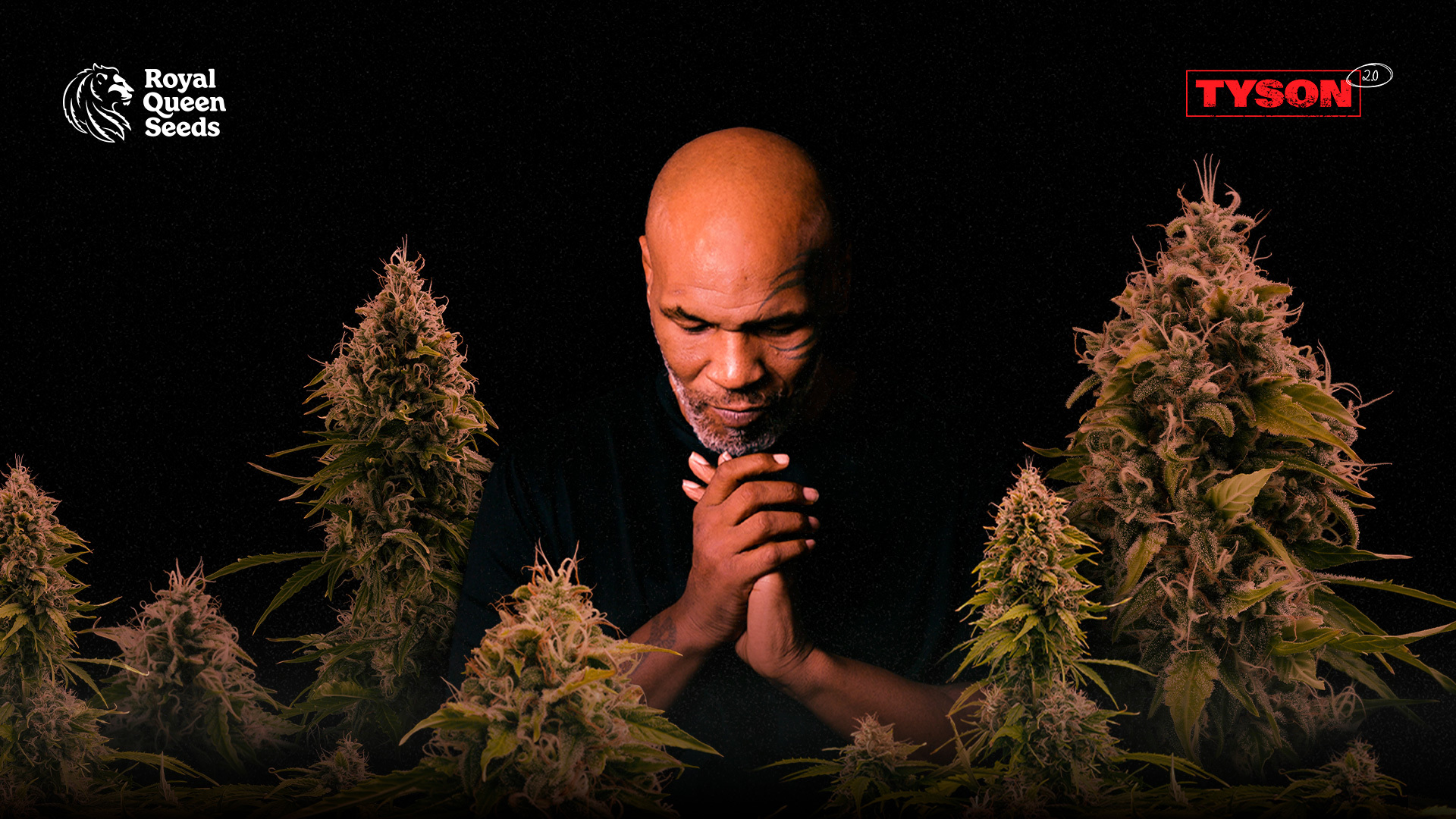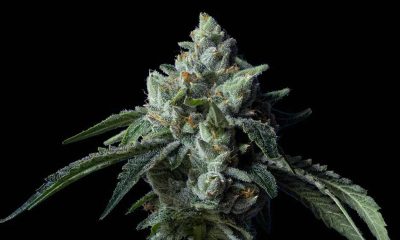Grow your favorite strains more easily with seeds from these top sources. These recommendations on the best autoflower seed banks are made by Leafly’s Product Picks team after extensive research, internal debate, and expert consultation. If you buy through links on this page, we may earn a small commission.
Growing your own cannabis has never been easier, and more and more Americans are discovering their green thumbs and falling in love with cannabis cultivation. A big part of the plant’s newfound popularity is the rise of autoflowering strains, which have charmed novice and expert growers alike with their low-maintenance growing style and consistent yields.
A quick look at the best autoflower seed banks
Best selection: Seed Supreme
Best classic strains: Royal Queen Seeds
Best for beginners: ILGM.com
Most innovative: DNA Genetics
Best high-potency strains: Fast Buds
Our team has been eagerly charting the epic rise of autoflowers, and we’re happy to say that the future is bright for this eternally excellent, accessible crop. To help you get in on the action, we’ve assembled a list of the best autoflower seed banks for the top spots to buy autoflowering cannabis seeds online. This list of seed banks is full of champions, innovators, and artisans, and they’re all well deserving of your hard-earned dollars.
If you’re curious about what exactly makes an autoflower an autoflower, and what sets this strain apart from traditional photoperiod strains, stick around after the list to read our breakdown of the science—no lab goggles required. But first, and without further ado, here’s our list of the very best autoflower seed banks of 2024.
The best autoflower seed banks of 2024: Reviews and recommended products
| • Virtually unparalleled selection of autoflowering strains |
| • Sourced from a global network of breeders |
| • Quick delivery time and regular giveaways |

Recommended strain
GG4 is one of the most famous strains in the cannabis world today and essential growing for cannabis cultivators in the same way that Citizen Kane is essential viewing for film lovers. Seed Supreme’s autoflowering rendition of this famous strain is a fast-growing and low-effort indica-like that is a great pick for either your first grow or your five hundredth. Named after the gloriously sticky resin that it produces in prodigious quantities, GG4 induces a heavily sedating high that relaxes the body, making it a perennial favorite for those who turn to cannabis as a pain reliever or sleep aid.
There’s a staggering number of cannabis strains out there—we oughta know—and the plant’s endless variety is part of the reason why so many people keep falling in love with cannabis. If you have the heart of a collector and gotta grow and smoke em’ all, then Seed Supreme is the bank for you.
They’re a verified weed seed emporium with dozens and dozens of autoflowering strains available at an affordable price point. If you’ve heard of a strain in a song, movie, or here from Leafly, then the odds are good that Seed Supreme can ship it directly to your door. Our advice? Spend an afternoon browsing Seed Supreme’s vast catalog, you’ll find enough enticing strains to plan out your next several grows & see why they’re one of our best autoflower seed banks.
“You want it? Seed Supreme has got it. We tip our cap to this bank, from one crew of strain fanatics to another.”
GG4 gets its high potency from its heavyweight progenitors, Sour Dubb and Chocolate Diesel. This heritage is also where GG4 gets its polarizing flavor; a heavy punch of diesel and ammonia undergirded by more subtle, sour aromas that make themselves known on the inhale. You can expect your GG4 to have somewhere in the low 20% THC range, plenty for even an experienced consumer with a tolerance to match. Seed Supreme’s GG4 auto is also a cinch to grow, despite the strain’s wide leaves and titanic colas due to the sturdy genetics bred into it by the team at Seed Supreme.
| • Deep connection to Dutch cannabis culture |
| • Decades of experience selling cannabis seeds |
| • Online seedfinder helps customers discover new strains |

Recommended strain
Amnesia Haze has been a mainstay of stash boxes the world over for many years, and Royal Queen Seeds’ autoflowering rendition of this classic is the best way to get it in your grow. Amnesia Haze first rose to prominence in the freewheeling Amsterdam scene, where cannabis’ pseudo-legal nature allowed for incredible amounts of experimentation. Amnesia Haze is one of the standout strains from that process, a citrusy sativa-like that our team loves for a morning smoke that won’t end your day prematurely with overwhelming potency.
Royal Queen Seeds is one of the relative newcomers to the US market on this list, but don’t mistake that for inexperience; they only crossed the Atlantic after establishing themselves as one of Europe’s premier sources for autoflowering and photoperiod seeds.
Born in the legendary coffeehouses of Amsterdam, the team at Royal Queen Seeds has had a front-row seat to the development of cannabis into the massive industry it is today. They’re the stewards of some of the genetics from that classic era of experimentation and popularization when Amsterdam was the center of the cannabis universe.
But don’t get it twisted and start thinking that Royal Queen Seeds is just a purveyor of hall-of-fame strains, you’ll also find both new twists on classics and wholly unique strains on the Royal Queen Seeds storefront.
“Cannabis lovers used to have to make a pilgrimage to Amsterdam for this kind of weed. Now, Royal Queen Seeds brings the best of The Netherlands to your garden.”
Amnesia Haze is one of those strains from a shadowy era of cannabis history when genetics and pedigrees get a bit muddled, but it has DNA from both South Asian and Jamaican Landrace strains. Those ancient genetics make Amnesia Haze one of the most recognizable strains on the smoke, but Amnesia Haze is also quite distinctive on the stem as well. You can expect long, thin leaves and foxtail buds with plenty of deep, verdant greens. Amnesia Haze is a bit of a shy one; it takes its time to bloom, but once it does, patient growers will be rewarded with heaps of thick, high-quality buds.
| • Wide selection of affordable seeds |
| • Free grow bible emailed to customers with seed purchase |
| • Regular incredible promotions |

Recommended strain
White Widow, a massively popular strain that began to dominate cannabis culture in the mid-90s, is often recommended for newer growers to get their feet wet with growing before diving in. ILGM has made it even easier to grow this famous it-strain by creating an autoflowering variant that does almost everything but water itself. Even if you’ve struggled with keeping plants alive in the past, ILGM’s White Widow Auto is a cinch to care for; with the ability to thrive in virtually any setup. This strain laughs at cramped apartment closets, fluctuating temperatures, and even some common diseases that make less hearty strains tremble.
ILGM aka I Love Growing Marijuana and their incomparable founder, Robert Bergman, have been some of the biggest names in American cannabis seeds through several of the plant’s different eras. As you may have guessed from their name, ILGM is a passion project sustained through a commitment to the joys of cannabis cultivation.
We’re big fans of their grow bible, a massive tome full of growing wisdom that ILGM sends to your email when you buy any of their seeds. And that’s the type of outfit Robert Bergman has made—a company that cares about spreading knowledge and furthering the accessibility of cannabis cultivation.
“Aptly named ILGM would be one of the best autoflower seed banks in the world even without their cartoon mascots. With, no contest.”
Like all the best heroines, White Widow’s past is a little mysterious. We aren’t sure of the specifics, but we know that White Widow is descended from a Brazilian sativa landrace and a heavily resin-producing South Indian indica. The result is the Goldilocks of indica-likes, potent but not too potent, relaxing but not sedating, an uplift that comes without panic.
These balanced qualities extend to White Widow’s flavor as well; you can expect a woody, subtly sweet taste that still carries a delightful dankness that our team of writers go wild for. Newcomers to growing and old hands alike will find something to love in ILGM’s White Widow Autoflower, so click the link below and don’t wait another day to start growing.
| • Two decades of experience |
| • Creators of several famous strains |
| • Reputation for consistent innovation |

Recommended strain
You may not have heard of this strain from DNA Genetics yet, but trust us, it might be everywhere soon. A true indica-lovers indica, Canelo is a closer that is best saved for the end of the night when it’s time to tune out and turn off. It excels in this role, and we’re putting our marker down that DNA Genetics’ Canelo’s profile will only keep rising as time goes on, and you can grow it and smoke it way before your local dispensary has it in stock with these autoflowering seeds. If you love indicas, or even just next-big-things, then you need to check Canelo out.
DNA Genetics is a legendary bank that occupies a rare and hallowed spot in cannabis-growing culture. They’ve recently celebrated their 20th anniversary, an incredible feat that makes them older than Methuselah in weed years. They’ve stuck around so long by consistently looking to the future and never resting on their quite considerable laurels.
They’re the minds behind several of the most popular strains to arrive since the new millennium, with a commitment to quality that has earned them the respect of breeders, retailers, and homegrowers alike. The odds are good that the next big strain is somewhere on DNA Genetics storefront, so get ahead of the curve and order some exciting autoflowering seeds from DNA Genetics before they’re cool and never let your friends hear the end of it.
“When we’re looking for something avant-garde that’ll set the smoke circle buzzing, DNA genetics is our first stop.”
OG Kush and Strawberry Banana are the direct progenitors of Canelo Auto, a prestigious parentage that makes the strain nothing less than indica royalty. You can taste and smell that heritage as well, both in the kush earthiness and fruity sweetness. These genetics also mean Canelo is a resilient plant that is quite forgiving to novice growers and less-than-ideal conditions, so don’t let either of those factors stop you from taking the plunge.
You can expect your Canelo buds to have a THC percentage somewhere in the high teens or low twenties, just enough to put you down for the count at night without a trace of grogginess in the morning. Grow what people are going to be talking about before they’re talking about it and order yourself some Canelo Auto seeds today.
| • Autoflower specialists |
| • Winner of several global awards |
| • Quality Californian genetics |

Recommended strain
Fast Buds’ Strawberry Gorilla Auto is one of the most-awarded autoflowering strains in the world, and it can be yours in no time flat. It recently triumphed in the American Autoflower Cup and even beat out some photoperiod strains to earn honors at the 2023 Farmer’s Cup. Those are pretty some pretty serious kudos to earn, but if you ask them, the team of Fast Buds breeders responsible for this strain would put more stock in the overwhelmingly positive response from growers who have tried their hand at growing their own Strawberry Gorilla Auto. Their hybrid has won hearts with its surprisingly potent strawberry flavor and classic diesel aroma.
Fast Buds has been on a meteoric rise, quickly rising to become some of the preeminent autoflower specialists in the world. They’re an autoflower seed bank that takes pride in their top-tier California genetics while also maintaining a global perspective on the cannabis industry.
Fast Buds’ trophy case features awards from all over the planet, a truly globe-trotting tour of excellence that we here at Leafly have to applaud (and give our best autoflower seed banks list stamp of approval). As a bank that focuses on autoflowers, they’ve done incredible work in ensuring that autoflowering strains can stand on equal footing in terms of yield and potency to their photoperiod counterparts. They’re an easy recommendation for all the autoflower lovers out there, but if you’re a skeptic who’s made it here, then our advice is to see if the autoflower experts at Fast Buds can change your mind.
“Fast Buds knows the ins and outs of autos better than just about anyone.”
Strawberry Gorilla Auto isn’t for novices in more ways than one. It benefits from an experienced hand that knows how to properly handle its height by providing support and plenty of nutrients. Those growers who are up to the task will reap some truly stunning rewards when their gorgeous purple buds are ready for harvest. Strawberry Gorilla Auto is a monstrously potent strain that can produce buds with up to 28% THC. If you’ve ever been skeptical about autoflowering strains’ ability to stack up to traditional photoperiods, we dare you to give Strawberry Gorilla a try; we won’t even say “I told you so!”
Why you can trust Leafly Product Picks
Leafly is the world’s leading cannabis discovery platform and provides a vast library of content from some of the most respected voices in cannabis. Leafly Product Picks prioritizes accuracy and integrity in our selections, working through mountains of research and testimonials to source products you can trust.
Jake Rosendale: Lead Content Writer, Brands & Products

Jake Rosendale is Leafly’s Lead Content Writer, Brands & Products. He’s been with Leafly since 2022, where he spends his time researching the best products in the wide world of weed. Jake’s been writing about cannabis, food, and wine in the Seattle area for 5 years. In addition to Leafly, you can find his work in Seattle Met Magazine and High Times. He loves sci-fi novels, country music, and Super Lemon Haze.
Anna Elliott: Senior Content Editor, Brands & Products

Anna Elliott is Leafly’s Senior Content Editor, Brands & Products. She’s been with Leafly since 2021, managing and editing brand-related content and bringing the best stories on the industry’s top products to life. With a decade of experience reviewing products, covering brands, and editing stories, Anna loves talking up the people & products that make a real difference in readers’ every day. She’s found that Space Mints makes the perfect pairing for enjoying her frankly irresponsible vinyl collection.
What is an autoflower?
An autoflowering cannabis plant is any breed of cannabis that will flower after a certain period of time regardless of the amount of light the plant receives. This is opposed to traditional photoperiod strains, which will only flower due to changing light levels, either caused by the changing of the seasons or by a grower artificially lowering the amount of light the plant receives.
Autoflowers tend to be smaller, faster growing, and less potent than their photoperiod cousins, although enterprising growers are doing their best to mitigate this last point. Since autoflowers are categorically easier to grow than photoperiod plants, they’re very popular with newer growers who aren’t eager to deal with changing light levels.
All autoflowering strains share some DNA with the cannabis ruderalis plant, a variety of cannabis native to harsh northern climates, forcing the plant to evolve in ways to cope with the lack of sunlight and short growing seasons. Ruderalis isn’t very potent on its own, but breeders can cross cannabis ruderalis with traditional indica or sativa strains in order to produce a plant that flowers automatically, or an “autoflower.”
Pretty cool, right? If you’re still curious about autoflowers, cannabis ruderalis, or anything else having to do with growing cannabis, then head over to Leafly’s guide to growing marijuana. It’s the best spot on the internet to learn everything there is to know about cultivating & harvesting our favorite plant after you’ve made your picks from our best autoflower seed banks list.
Final thoughts
That’s all from us this time, so get to growing! But while you’re waiting for your seeds to germinate, make sure to check back in on this list of the best autoflower seed banks regularly to see if there are any hot new banks with fire strains you have yet to try. And don’t forget to check out the rest of our Product Picks to see our selections fore the greatest finds in the wide world of cannabis. Happy growing!
For business inquiries, please direct messages to affiliate@leafly.com.
Availability subject to law.



